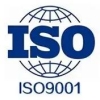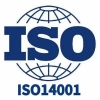Image sensor applications in autonomous driving and machine vision

In today's fast-moving technology landscape, autonomous driving technology is changing the transportation landscape at an unprecedented rate. As one of the core technologies underpinning this revolutionary change, image sensors play a crucial role in autonomous driving and machine vision systems. By capturing and processing environmental information, image sensors help vehicles realize the perception, judgment and decision of the surrounding environment, making autonomous driving more and more safe and reliable.
How image sensors work
Image sensors are electronic devices that convert optical signals into electrical signals, and common types include CCD (charge-coupled device) and CMOS (complementary metal oxide semiconductor) sensors. Both sensors have advantages and disadvantages, but in autonomous driving, CMOS sensors have become the mainstream choice because of their characteristics of low power consumption, high-speed imaging and strong integration.
When the CMOS sensor is working, light enters the photodiode array of the EVM3ESX50B13331K sensor through the lens, each diode is responsible for capturing the light intensity information of its location. This information passes through the internal signal processing unit to form a digital image and is transmitted to the central processing unit (CPU) or image processing unit for analysis and decision making. This process requires extremely high throughput and fast response capabilities to ensure a real-time response.
Application scenarios of automatic driving
1. Obstacle detection
In the complex driving environment, the automatic driving system needs to recognize the obstacles in front and around in real time, and the image sensor is particularly important in this process. Through high-resolution cameras combined with advanced image processing algorithms, the system can clearly identify pedestrians, traffic signs, other vehicles and potentially dangerous objects. Image data not only helps the vehicle identify the type of object, but also judge the distance and trajectory of the object, which is essential for safe driving.
2. Lane identification
Lane line is an important information sign during driving. Image sensor can accurately identify the contour and color of lane lines by collecting road image data and using image processing technology. This information, combined with the current position of the vehicle, can realize the lane keeping function to ensure that the vehicle is safe in the specified lane.
3. Traffic signal interpretation
Changes in traffic lights often determine the driving decisions of vehicles. The image sensor can monitor the status of the signal light in real time and communicate information with the on-board computing unit through a network connection, so as to intelligently judge when to stop, accelerate or turn. The application of image recognition technology enables autonomous vehicles to make reasonable responses in complex traffic environments.
4. Driving environment awareness
In addition to identifying dynamic obstacles, image sensors can also be used to monitor environmental features such as road conditions, weather changes, and more. By analyzing the images captured, the system can judge climate changes such as rain, snow and haze, so as to adjust the driving strategy to ensure safe driving.
Data processing and algorithm support
The original image data captured by the image sensor needs to be analyzed by powerful image processing algorithms. Modern deep learning methods, such as convolutional neural networks (CNN), excel in image recognition and processing. These techniques are able to train models to recognize different types of objects, scenes, and their features.
Through training, the system can realize real-time target detection in complex scenes. Some advanced algorithms can identify multiple objects in an image within 500 milliseconds and determine their motion trends. This real-time processing capability is essential for autonomous driving, ensuring that the system can react quickly and accurately.
Diverse portfolio of sensor systems
In practical autonomous driving applications, image sensors are often combined with other sensors such as LiDAR and millimeter-wave radar to form a multi-sensor fusion system. Each sensor has unique advantages in different environments and conditions, and their combination can greatly enhance the overall perception of the system.
Lidar, for example, provides highly accurate three-dimensional spatial information, especially at night or in harsh weather conditions. When combined with image sensors, they complement each other in complex scenes and improve comprehensiveness in object recognition and environmental understanding.
Future development trend
The application of image sensor technology in the field of autonomous driving will continue to deepen. With the continuous upgrading of hardware and the maturity of algorithms, future image sensors will have higher resolution, faster shooting speed and stronger dynamic range. Performance in low light and high contrast environments will also be significantly improved, making automated driving safer in a variety of driving scenarios.
More importantly, with the development of high-speed communication technologies such as 5G, the data transmission capability of image sensors will also be enhanced, enabling vehicles to exchange information with other vehicles and infrastructure more quickly, further enhancing the intelligence level of the overall transportation system.
In an era of increasing popularity of autonomous driving and machine vision applications, image sensors will undoubtedly continue to play an indispensable and critical role in leading the future of transportation.
您可能感興趣的產品
 |
AA53002-015 | XFRMR TOROIDAL 300VA CHAS MOUNT | 8352 More on Order |
 |
62054-P2S02 | XFRMR TOROIDAL 15VA CHAS MOUNT | 3526 More on Order |
 |
62044-P2S02 | XFRMR TOROIDAL 10VA CHAS MOUNT | 6048 More on Order |
 |
62035-P2S02 | XFRMR TOROIDAL 7VA CHAS MOUNT | 6642 More on Order |
 |
62005-P2S02 | XFRMR TOROIDAL 1.6VA CHAS MOUNT | 7668 More on Order |
 |
62075-P2S02 | XFRMR TOROIDAL 35VA CHAS MOUNT | 7308 More on Order |
 |
62073-P2S02 | XFRMR TOROIDAL 35VA CHAS MOUNT | 5292 More on Order |
 |
70054K | XFRMR TOROIDAL 15VA THRU HOLE | 4716 More on Order |
 |
70043K | XFRMR TOROIDAL 10VA THRU HOLE | 5562 More on Order |
 |
70041K | XFRMR TOROIDAL 10VA THRU HOLE | 2826 More on Order |
 |
70031K | XFRMR TOROIDAL 7VA THRU HOLE | 8658 More on Order |
 |
70024K | XFRMR TOROIDAL 5VA THRU HOLE | 8748 More on Order |
 |
70013K | XFRMR TOROIDAL 3.2VA THRU HOLE | 4392 More on Order |
 |
70011K | XFRMR TOROIDAL 3.2VA THRU HOLE | 7560 More on Order |
 |
70002K | XFRMR TOROIDAL 1.6VA THRU HOLE | 5040 More on Order |
 |
62015-P2S02 | XFRMR TOROIDAL 3.2VA CHAS MOUNT | 3780 More on Order |
 |
70025K | XFRMR TOROIDAL 5VA THRU HOLE | 4068 More on Order |
 |
62084-P2S02 | XFRMR TOROIDAL 50VA CHAS MOUNT | 7284 More on Order |
 |
62060-P2S02 | XFRMR TOROIDAL 25VA CHAS MOUNT | 23778 More on Order |
 |
70005K | XFRMR TOROIDAL 1.6VA THRU HOLE | 7218 More on Order |
 |
AC1200 | CURR SENSE XFMR 200A T/H | 2142 More on Order |
 |
AC1015 | CURR SENSE XFMR 15A T/H | 5166 More on Order |
 |
AC1010 | CURR SENSE XFMR 10A T/H | 5963 More on Order |
 |
AC1025 | TRANSFORMER CURRENT 25.0 AMP | 4230 More on Order |









